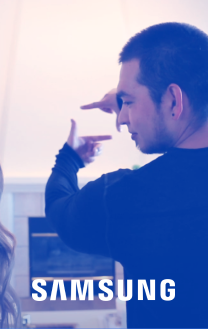This post is by Gravity Jack’s Chief Technical Officer, Shawn Poindexter PhD.
Photo: The Gravity Jack research team, pictured left to right: Randy Ridgway, Marc Rollins, Shawn Poindexter, Tim Tanasse, Benjamin Dilday
The public visibility of Gravity Jack’s work is typically accomplished with our globally respected production team. This team can take something as simple as an idea that has been scribbled down on a napkin, and guide it through our complete design and development process, where it becomes a great, powerfully functional product.
What many don’t know? Gravity Jack also has a thriving research team of four engineers, including two PhDs. In addition to working on novel inventions and internal projects of interest, this team has the unique opportunity to tackle some of the world’s most cutting-edge challenges that prospects and customers alike bring to us.
The Value of Research When Creating The Future Experience™
Research is valuable, even if it doesn’t immediately result in a commercial or practical development because our team learns new techniques and paves the way for future innovations. For example, several years ago we built a cylindrical tracking algorithm for textured targets, and we are now building on that experience to bring forward an improved version with many more capabilities. The goal of this post is to take you behind the scenes, and share a few highlighted accomplishments of this team!
Years ago, Gravity Jack’s first successful execution was a project that required us to build a custom computer vision algorithm for an aircraft manufacturing process. Without revealing their secret manufacturing process, we can say that a machine needed to measure the gap between two very long “things” at high speed.
A laser line is drawn perpendicular to the gap while a camera looks at the laser light at a low angle of incidence which is a device known as a laser profilometer. The image is mostly a straight line with a little dip near the middle. See figure 1 for a simulated example. Due to varying surface the gap could appear almost anywhere in the image and at different angles. Our client had sourced out an algorithm, but it was far too slow to run on the target embedded system. Gravity Jack’s research team was able to improve the performance by over 1000x, leading to the successful deployment of the larger project (which we also contributed to). This success was accomplished by approaching the challenge from an entirely new new perspective, rather than attempting to simply optimize the existing code.

Figure 1. Shows a simulated version of the laser profilometer output without noise. The real images are not nearly as clean.
Growth and expansion of the team
Later, as our team continued to grow, the exciting challenges continued to come! Another example that we like to share includes a project where our team built a content-based image retrieval system for an ongoing project with a customer for the purpose of identifying and classifying circuit board images. The successful proof-of-concept was built using a bag-of-words model. We detected key points of interest using the FREAK detector and turned each keypoint into a “word” using the ORB descriptor. The bag-of-words model treats the images like documents, then we used term frequency-inverse document frequency to match image documents to other image documents. We later implemented a more scalable spherical hashing technique. Soon, we will demonstrate a solution based on deep neural networks.
Over the years, the research that our team has completed has resulted in numerous patents for indoor location, computer vision, and augmented reality technologies. To date we have been awarded 6 patents, with a few more currently in the works! Our primary focus of research has been advancing computer vision and indoor location techniques. Both of these areas are important to advancing augmented reality technologies. We wish we could tell you about all the exciting things that we have coming. Instead, for now, we can talk about our tools for our research.
The Research Tools We Use
Most of our research projects use some combination of Python, C++, and OpenCV (a computer vision toolkit). Python is a great language for quickly prototyping, especially since OpenCV has a Python interface. When we write custom algorithms it is most often in C++, for performance and compatibility with our main development platforms: iOS and Android. We’ve expanded our toolset recently to include state-of-the-art machine learning libraries such as scikit-learn and TensorFlow.
Our research team is now starting to apply deep learning techniques to new problems and opportunities. In fact, last week we just built our first dedicated in-house deep learning machine.
We’ll detail the build in a follow-up article! 🙂
One last thing!
If these type of projects sound interesting to you, and you like exploring new technologies, we encourage you to apply on our website! Our team is genuinely curious about how the world works and loves tackling problems that others label as impossible. We value talent over experience and highly value diversity of background, experience, ideas, and perspectives. If you like analyzing or designing algorithms and sifting through data to make sense of it, we’d love to hear from you.
About Shawn Poindexter
Before accepting the role as Chief Technical Officer, Shawn served as Director of Development for Gravity Jack, for five years. Shawn’s vast list of competencies include software development, algorithms, computer vision, mobile applications, machine learning, technical leadership and research. Shawn’s research has helped contribute invaluably to Gravity Jack’s existing portfolio of awarded patents in the augmented reality, location awareness and computer vision space.
Shawn Poindexter received his Bachelor of Science in Mathematics and Physics from Missouri State University, before continuing on to receive his Ph.D. in Astrophysics from The Ohio State University. While at The Ohio State, Shawn served as a data scientist, where he created and maintained quasar microlensing simulations and models, as well as an instructor teaching undergraduate astronomy courses. Additionally, as a graduate research assistant, Shawn engineered a distributed simulation, enabling new understanding of black hole accretion physics, constructed a mathematical model of the Milky Way Galaxy for measuring an exo-planet’s mass and performed a systematic analysis of all known Galactic microlens parallax events.





